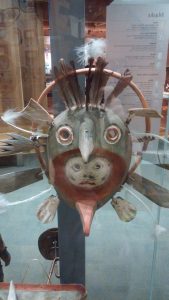 “Just saying thank you is the greatest speech a human being can make.” David Katzeek
“Just saying thank you is the greatest speech a human being can make.” David Katzeek
David’s words really touched me today, especially as I watched high school students from Raven and Eagle Clan respond to the elders with words of acknowledgement and gratitude. And then again as I watched David graciously accept being corrected by another Elder. “Gunalcheesh,” he responded.
Hearing and validating all voices is such an important part of culturally responsive teaching. When the focus is not on the thinking process but on correct answers, when we rigidly believe that our way is the only way, students voices are brushed aside and important learning opportunities are lost.
When David was corrected by another elder he reminded us that even at his age, he is still learning. He is not only the teacher but he is also the student. We have a lot we can learn from our students. As culturally responsive teachers we are not going to have a perfect knowledge of our students backgrounds. We need to provide opportunities for all students to express themselves, to tap their cultural collateral and share their different ways of knowing.
I saw this listening and validating in action as we worked on our math and science projects. During our math walk, our guest teacher checked in on us, asked us questions about the process we were using and listened. She was there as support but she did not critique us. Her hands off approach gave us the freedom to explore. We had to tap our prior knowledge, to collaborate with our peers and determine our own approach to the problem.
What was equally as important was that my voice was heard within my group. At one point I suggested a simplified equation to solve our problem and the math wiz in our group took my suggestion and we did it my way. That was a very empowering experience. I believe that if we can teach our students to see each other as human beings-not rich, poor, black, white, pretty, ugly, smart, dumb- we will be able to create a culture within our classrooms where ideas are allowed to flow freely because all ideas are acknowledged equally.
Further Thought on CRT…
Ernestine Hayes has a very intense way of speaking and interacting with the class. She made quite an impression. She was very direct when she said that we are still living with colonialism. I chewed on that for quite a while. Then she talked about the long term effects that a teacher can have, not just on one child but on a generation. This was an excellent reminder for me that indigenous people are still, to this day, feeling the effects of colonialism. So the war never really ended, the battle ground just changed.
This really reinforces for me, the importance of CRT. Just being mindful of how you approach lesson planning, referring back to our culturally responsive curriculum standards. Vetting material before you present it to the class. Allowing students to question the material. Invite dissenting opinions in order to open up conversations and create real learning opportunities. Using multiple sources so we can view our subject matter through many different lenses.


